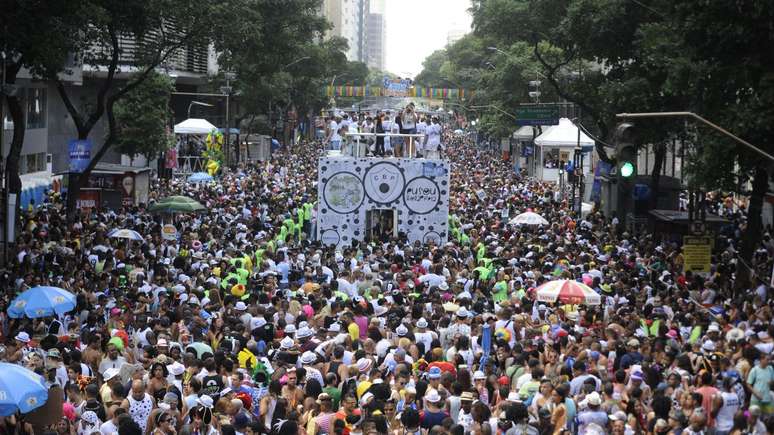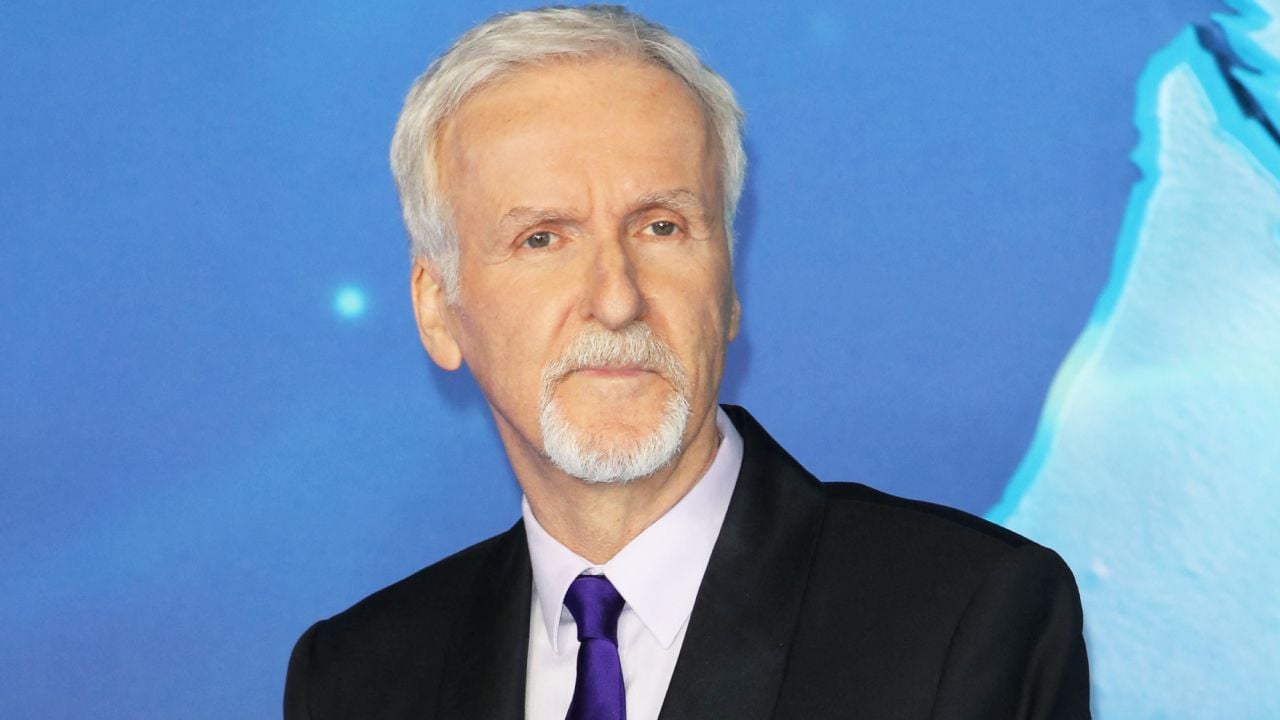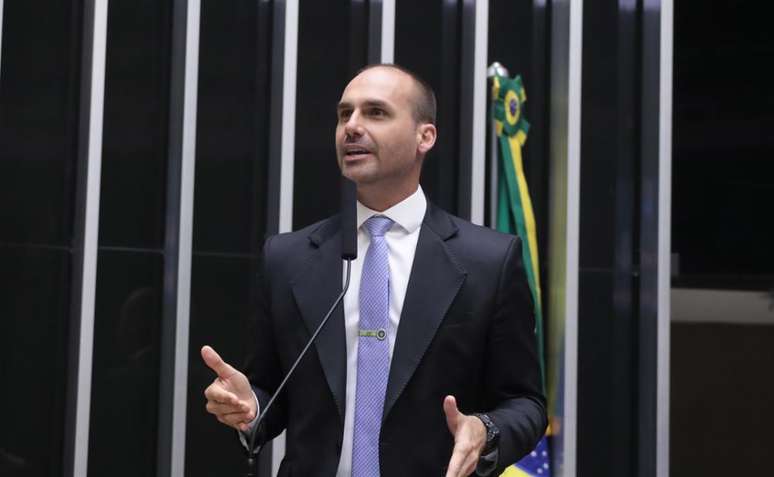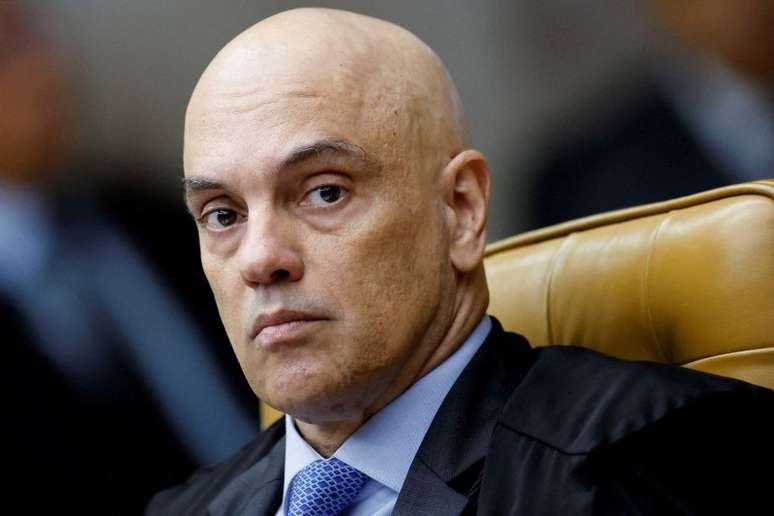The block opened the official carnival this Saturday, in Rua 1º de Março and Avenida Antônio Carlos, in the center of Rio.
Aerial images of Avenida Rio Branco, in the center of Rio de Janeiro, taken by millions of revelers on Carnival Saturday, have made Black ball cord a giant famous throughout Brazil. But, according to the assessment of the president of the bloc, Pedro Ernesto Marinhosince the megablock parades were moved to the Via Primo Marzo AND Avenida Presidente Antonio Carlosthe block has lost the revelers.
“When the ball crossed the Rio Branco, it seemed as if the asphalt was smiling, the buildings were clapping,” he recalls nostalgically. The group has been marching on Avenida Rio Branco since 1919, “when the avenue was still new”. Previously called Avenida Central, Avenida Rio Branco was the great urban reference point of the reform desired by the then mayor of Rio Branco. Federal District of Pereira Passosof 1906, which transformed the center of Rio de Janeiro.
With the change of venue there is no longer the same romance, complains Marinho. “Avenida Rio Branco was renowned throughout the world as a place for large political, artistic and carnival events. The new location is quite inhospitable. There is no bar or tavern”. And for him carnival and beer are Siamese brothers. “There is no carnival without beer.”
Marinho recalls that, in Avenida Rio Branco, there was a great apotheosis when the parade Bola Preta ended, in Cinelândia, with packed bars. “In Avenida Antônio Carlos there is not the same atmosphere, the same environment. So attendance is decreasing.”
The last year on Avenida Rio Branco was 2014, when Bola Preta was at its peak for revelers. “Since 2010, we have never marched with less than 2 million people. We reached the peak in 2013, with 2.5 million people. When we went to the Primeiro de Março and President Antônio Carlos, the blockade could no longer to attract the same number of revelers. In the 2023 carnival we had 1 million revelers. But it was a significant number”He admitted.
In any case, Marinho assures that the wall has already shown what it came for. “The story of Bola Preta shows that it is a positive icon of the city of Rio, it is traditional, it represents the city and all its people. So, for us, if there are a million revelers, we will be super satisfied. If they are also 900 thousand. The important thing is not to disappoint the revelers who, every year, impatiently wait for the Cordão da Bola Preta on the street. Black ball It is the original, it is the one that maintains the tradition of the carnival of the city of Maravilhosa.”
History
Founded in 1918 by Álvaro Gomes de Oliveiraor Kaveirinha, Francisco Bricio Filho (Chico Bricio), Eugenio Ferreira, João Torres and the three brothers Oliveira Roxo, Jair, Joel AND Archimede Guimarães, the traditional Cordão da Bola Preta continues, this year, the celebrations of its 105 years of existence. It was Kaveirinha who gave the block its name after seeing a beautiful woman dressed in a white dress with black balls pass by. From here the Cordão da Bola Preta.
The block opened the official carnival this Saturday, in Rua 1º de Março and Avenida Antônio Carlos, in the center of Rio. The president of Bola Preta says that this year the objective is to defend the preservation of the environment. “Even throughout the life of Bola Preta, we want to join this fight to defend the environment.”
Throughout the year, the idea is to plant trees to participate in the carbon dioxide (CO2) neutralization process. During the parade, disposable bins will be placed to allow revelers to deposit waste. Pedro Marinho also wants to promote the reuse of canvas and threads. “It’s something that worries us, because the quantity of tarpaulins is very large. We really want to engage in this fight to defend and preserve the environment.”
Source: Terra
Rose James is a Gossipify movie and series reviewer known for her in-depth analysis and unique perspective on the latest releases. With a background in film studies, she provides engaging and informative reviews, and keeps readers up to date with industry trends and emerging talents.








